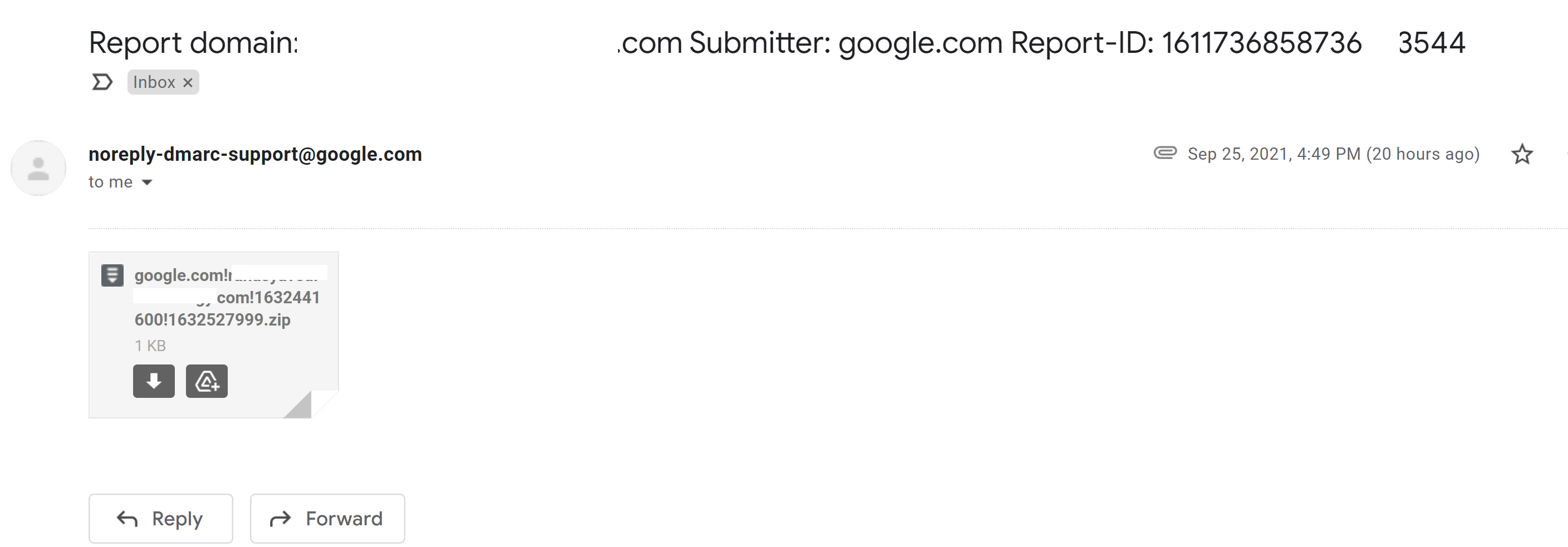Facebook fined for forcing users to agree to personalised ads
-
Facebook never learns and clearly doesn’t think the various privacy laws created to protect individuals apply to them. Yet another example of Facebook thinking it can break rules and never be brought to account.
This is a blatant breach of privacy and shouldn’t go unpunished in my view. Will be interesting to see how Facebook tries to squeeze out of this one.
-
undefined phenomlab marked this topic as a regular topic on 4 Jan 2023, 16:51
-
@phenomlab unfortunately, the biggest problem is the US is not as privacy friendly. Big companies always lobby and win in Congress.
What Facebook/Meta does in the EU is exact the same thing that it is doing in the US. And Congress did not care about Meta until they were involved in election related scandal.
-
@phenomlab unfortunately, the biggest problem is the US is not as privacy friendly. Big companies always lobby and win in Congress.
What Facebook/Meta does in the EU is exact the same thing that it is doing in the US. And Congress did not care about Meta until they were involved in election related scandal.
@crazycells exactly. Not so long ago, we had the Cambridge Analytica scandal in the UK. Meta (Facebook) seem to be the ultimate “Teflon” company in the sense nothing seems to stick.
-
-
@JAC I bet they manage to worm their way out of that one.
-
You just can’t trust them. There are others you can’t trust either. I have actually stopped using facebook for I think about three months now and I will tell you what, it is nice! Now I still do have my facebook account and have messenger on there because my daughter has messenger kids, so I do that that part of it. I did go on facebook last week I think it was and it was all the same stuff on there that I saw before I stopped going on there. Nothing changed and I found that I didn’t miss it, because people you follow don’t really post what is really happening in their lives, they just post memes and stupid s**t like that. Now don’t get me wrong I like a good meme, but most of them I don’t care about.
Eventually, I will probably delete my facebook account and not even have it anymore. I do play some games that I signed up using my facebook account, so I need to switch them or stop playing them, if I have no way backing up my progress on them. So eventually I will need to find a good secure, privacy first messaging app that I can setup for me and my daughter at some point here and then invite others to join to be able talk with them.
Anyway, I agree that facebook should have to pay a huge fine. I am sure they will settle out of court and all the lawyers will make bank, the people suing might make some money and facebook will continue stealing peoples data and selling it. It makes me wonder if facebook were shutdown for a day or a week, how much money they would loose out on. That would be the only way to make them take these things seriously.
-
@phenomlab said in Facebook fined for forcing users to agree to personalised ads:
@JAC I bet they manage to worm their way out of that one.
I bet they will find a way. They usually due. Or they will come up with a settlement and pay out less. Then go back to putting up adds again and make that money back in a couple of days.
-
You just can’t trust them. There are others you can’t trust either. I have actually stopped using facebook for I think about three months now and I will tell you what, it is nice! Now I still do have my facebook account and have messenger on there because my daughter has messenger kids, so I do that that part of it. I did go on facebook last week I think it was and it was all the same stuff on there that I saw before I stopped going on there. Nothing changed and I found that I didn’t miss it, because people you follow don’t really post what is really happening in their lives, they just post memes and stupid s**t like that. Now don’t get me wrong I like a good meme, but most of them I don’t care about.
Eventually, I will probably delete my facebook account and not even have it anymore. I do play some games that I signed up using my facebook account, so I need to switch them or stop playing them, if I have no way backing up my progress on them. So eventually I will need to find a good secure, privacy first messaging app that I can setup for me and my daughter at some point here and then invite others to join to be able talk with them.
Anyway, I agree that facebook should have to pay a huge fine. I am sure they will settle out of court and all the lawyers will make bank, the people suing might make some money and facebook will continue stealing peoples data and selling it. It makes me wonder if facebook were shutdown for a day or a week, how much money they would loose out on. That would be the only way to make them take these things seriously.
@Madchatthew said in Facebook fined for forcing users to agree to personalised ads:
I have actually stopped using facebook for I think about three months now and I will tell you what, it is nice
I stopped using Facebook quite a few years back. I still have an account, and it’s mainly used these days just to keep up to date with family etc.
@Madchatthew said in Facebook fined for forcing users to agree to personalised ads:
I did go on facebook last week I think it was and it was all the same stuff on there that I saw before I stopped going on there.
It’s always the same s**t posters! Pointless pictures of what people are having for dinner, where they’ve recently been, when they are on holiday (like leaving the keys under the doormat for burglars), and their latest “vanity” projects, like how great they look for their age etc. As you can tell, I’m, no fan, and it’s not something I’m going to be using anytime soon. I certainly never post anything about myself, that’s for sure.
@Madchatthew said in Facebook fined for forcing users to agree to personalised ads:
I will need to find a good secure, privacy first messaging app that I can setup for me and my daughter at some point here and then invite others to join to be able talk with them.
Or
@Madchatthew said in Facebook fined for forcing users to agree to personalised ads:
It makes me wonder if facebook were shutdown for a day or a week, how much money they would loose out on.
I too wonder how people would cope with Facebook being shut down for a week. Imagine not being able to s**t post for all that time! I reckon people will be checking into rehab centres because they can’t cope with real life!
-
You just can’t trust them. There are others you can’t trust either. I have actually stopped using facebook for I think about three months now and I will tell you what, it is nice! Now I still do have my facebook account and have messenger on there because my daughter has messenger kids, so I do that that part of it. I did go on facebook last week I think it was and it was all the same stuff on there that I saw before I stopped going on there. Nothing changed and I found that I didn’t miss it, because people you follow don’t really post what is really happening in their lives, they just post memes and stupid s**t like that. Now don’t get me wrong I like a good meme, but most of them I don’t care about.
Eventually, I will probably delete my facebook account and not even have it anymore. I do play some games that I signed up using my facebook account, so I need to switch them or stop playing them, if I have no way backing up my progress on them. So eventually I will need to find a good secure, privacy first messaging app that I can setup for me and my daughter at some point here and then invite others to join to be able talk with them.
Anyway, I agree that facebook should have to pay a huge fine. I am sure they will settle out of court and all the lawyers will make bank, the people suing might make some money and facebook will continue stealing peoples data and selling it. It makes me wonder if facebook were shutdown for a day or a week, how much money they would loose out on. That would be the only way to make them take these things seriously.
@Madchatthew I have an account with family on it but haven’t used Facebook for a few years now, believe it or not I know it sounds drastic but I actually felt relieved once I stopped using it.
I will only use it if 100% necessary and hate everything to do with it, it’s very damaging.
-
@Madchatthew I have an account with family on it but haven’t used Facebook for a few years now, believe it or not I know it sounds drastic but I actually felt relieved once I stopped using it.
I will only use it if 100% necessary and hate everything to do with it, it’s very damaging.
@JAC Agree with the damaging comment - I’d say to the point of toxic.
-
@phenomlab 100%!!
-
@Madchatthew said in Facebook fined for forcing users to agree to personalised ads:
I have actually stopped using facebook for I think about three months now and I will tell you what, it is nice
I stopped using Facebook quite a few years back. I still have an account, and it’s mainly used these days just to keep up to date with family etc.
@Madchatthew said in Facebook fined for forcing users to agree to personalised ads:
I did go on facebook last week I think it was and it was all the same stuff on there that I saw before I stopped going on there.
It’s always the same s**t posters! Pointless pictures of what people are having for dinner, where they’ve recently been, when they are on holiday (like leaving the keys under the doormat for burglars), and their latest “vanity” projects, like how great they look for their age etc. As you can tell, I’m, no fan, and it’s not something I’m going to be using anytime soon. I certainly never post anything about myself, that’s for sure.
@Madchatthew said in Facebook fined for forcing users to agree to personalised ads:
I will need to find a good secure, privacy first messaging app that I can setup for me and my daughter at some point here and then invite others to join to be able talk with them.
Or
@Madchatthew said in Facebook fined for forcing users to agree to personalised ads:
It makes me wonder if facebook were shutdown for a day or a week, how much money they would loose out on.
I too wonder how people would cope with Facebook being shut down for a week. Imagine not being able to s**t post for all that time! I reckon people will be checking into rehab centres because they can’t cope with real life!
@phenomlab yeah it is crazy how it is the same posters on facebook posting the same thing. I will be honest, I was probably one of them years back, but I stopped and realized that it was all just a waste of time. If facebook were to shutdown, there would be a lot of people needing to go to therapy I think.
I will have to check out session. I have looked at signal before. I will most likely choose between the two of them.
@JAC said in Facebook fined for forcing users to agree to personalised ads:
@Madchatthew I have an account with family on it but haven’t used Facebook for a few years now, believe it or not I know it sounds drastic but I actually felt relieved once I stopped using it.
I will only use it if 100% necessary and hate everything to do with it, it’s very damaging.
Yes, I have felt more at peace by not going on facebook. It is really damaging and I am going to try and teach my daughter to stay off of it along with other social media because it is so damaging. It is crazy what people will say when they are behind a keyboard that they would never say to your face.
-
@phenomlab yeah it is crazy how it is the same posters on facebook posting the same thing. I will be honest, I was probably one of them years back, but I stopped and realized that it was all just a waste of time. If facebook were to shutdown, there would be a lot of people needing to go to therapy I think.
I will have to check out session. I have looked at signal before. I will most likely choose between the two of them.
@JAC said in Facebook fined for forcing users to agree to personalised ads:
@Madchatthew I have an account with family on it but haven’t used Facebook for a few years now, believe it or not I know it sounds drastic but I actually felt relieved once I stopped using it.
I will only use it if 100% necessary and hate everything to do with it, it’s very damaging.
Yes, I have felt more at peace by not going on facebook. It is really damaging and I am going to try and teach my daughter to stay off of it along with other social media because it is so damaging. It is crazy what people will say when they are behind a keyboard that they would never say to your face.
@Madchatthew said in Facebook fined for forcing users to agree to personalised ads:
It is crazy what people will say when they are behind a keyboard that they would never say to your face.
Yes, commonly referred to as “keyboard warriors” who hide behind the anonymity that the internet offers. The general rule here should be that you are prepared to say whatever you’ve posted in person to their face. Most people aren’t brave enough to do that and choose to ruin people’s lives by posting whatever they feel like - and have no remorse or even basic consideration for how that might be received.
-
@Madchatthew said in Facebook fined for forcing users to agree to personalised ads:
It is crazy what people will say when they are behind a keyboard that they would never say to your face.
Yes, commonly referred to as “keyboard warriors” who hide behind the anonymity that the internet offers. The general rule here should be that you are prepared to say whatever you’ve posted in person to their face. Most people aren’t brave enough to do that and choose to ruin people’s lives by posting whatever they feel like - and have no remorse or even basic consideration for how that might be received.
@phenomlab said in Facebook fined for forcing users to agree to personalised ads:
@Madchatthew said in Facebook fined for forcing users to agree to personalised ads:
It is crazy what people will say when they are behind a keyboard that they would never say to your face.
Yes, commonly referred to as “keyboard warriors” who hide behind the anonymity that the internet offers. The general rule here should be that you are prepared to say whatever you’ve posted in person to their face. Most people aren’t brave enough to do that and choose to ruin people’s lives by posting whatever they feel like - and have no remorse or even basic consideration for how that might be received.
Ah yes the good ole fearless keyboard warriors, the bravest souls on the internet, until they are confronted in real life, which is hard to do because most of them are hiding in mom and dads basement, in the dark typing away their version of the social justice they need to push upon everyone else.
If someone is doing that kind of stuff and there is harm that comes to someone that is the victim, whether it be self or by others, then that keyboard warrior should be help responsible for that. Just because people are non-judgmental, show acceptance and open minded doesn’t mean that you have to agree with everything someone says. It is ok to disagree about things.
-
@phenomlab said in Facebook fined for forcing users to agree to personalised ads:
@Madchatthew said in Facebook fined for forcing users to agree to personalised ads:
It is crazy what people will say when they are behind a keyboard that they would never say to your face.
Yes, commonly referred to as “keyboard warriors” who hide behind the anonymity that the internet offers. The general rule here should be that you are prepared to say whatever you’ve posted in person to their face. Most people aren’t brave enough to do that and choose to ruin people’s lives by posting whatever they feel like - and have no remorse or even basic consideration for how that might be received.
Ah yes the good ole fearless keyboard warriors, the bravest souls on the internet, until they are confronted in real life, which is hard to do because most of them are hiding in mom and dads basement, in the dark typing away their version of the social justice they need to push upon everyone else.
If someone is doing that kind of stuff and there is harm that comes to someone that is the victim, whether it be self or by others, then that keyboard warrior should be help responsible for that. Just because people are non-judgmental, show acceptance and open minded doesn’t mean that you have to agree with everything someone says. It is ok to disagree about things.
@Madchatthew said in Facebook fined for forcing users to agree to personalised ads:
hiding in mom and dads basement, in the dark typing away their version of the social justice they need to push upon everyone else.
Love this analogy - sounds very much like the manifesto of Ted Kaczynski

@Madchatthew said in Facebook fined for forcing users to agree to personalised ads:
Just because people are non-judgmental, show acceptance and open minded doesn’t mean that you have to agree with everything someone says. It is ok to disagree about things.
Yes, and as I often say to people - “you can think what you like, but knowing when NOT to say it is a skill in itself”. Essentially, keep your views and opinions to yourself, and don’t force your diatribe on others who likely won’t appreciate it anyway.
-
@Madchatthew said in Facebook fined for forcing users to agree to personalised ads:
hiding in mom and dads basement, in the dark typing away their version of the social justice they need to push upon everyone else.
Love this analogy - sounds very much like the manifesto of Ted Kaczynski

https://www.washingtonpost.com/wp-srv/national/longterm/unabomber/manifesto.text.htm
@Madchatthew said in Facebook fined for forcing users to agree to personalised ads:
Just because people are non-judgmental, show acceptance and open minded doesn’t mean that you have to agree with everything someone says. It is ok to disagree about things.
Yes, and as I often say to people - “you can think what you like, but knowing when NOT to say it is a skill in itself”. Essentially, keep your views and opinions to yourself, and don’t force your diatribe on others who likely won’t appreciate it anyway.
@phenomlab said in Facebook fined for forcing users to agree to personalised ads:
Love this analogy - sounds very much like the manifesto of Ted Kaczynski
Thanks, that is always what I think when someone goes off on someone else online trying to force everyone to think the same as them.
@phenomlab said in Facebook fined for forcing users to agree to personalised ads:
Yes, and as I often say to people - “you can think what you like, but knowing when NOT to say it is a skill in itself”. Essentially, keep your views and opinions to yourself, and don’t force your diatribe on others who likely won’t appreciate it anyway.
Yes, 100%
-
So kind of along the lines of not allowing big tech to steal your private data, I realized that I was using gboard on my phone. A light bulb flashed in my head, what a better way to get every keystroke that you use when type, searching, putting in passwords and all of that. So realizing that, I did some searching and reading some reddits and found HeliBoard, which does not do those things. I have F-Droid installed on my phone and installed it from there. So far I like it and it also has some of the features that gboard has.
I also decided to go with signal. And to get family to change to it isn’t so easy. My mom did, but my brother is taking his sweet ole time. He said he installed it but he hasn’t signed up for it yet. So we will see.
-
So kind of along the lines of not allowing big tech to steal your private data, I realized that I was using gboard on my phone. A light bulb flashed in my head, what a better way to get every keystroke that you use when type, searching, putting in passwords and all of that. So realizing that, I did some searching and reading some reddits and found HeliBoard, which does not do those things. I have F-Droid installed on my phone and installed it from there. So far I like it and it also has some of the features that gboard has.
I also decided to go with signal. And to get family to change to it isn’t so easy. My mom did, but my brother is taking his sweet ole time. He said he installed it but he hasn’t signed up for it yet. So we will see.
@Madchatthew said in Facebook fined for forcing users to agree to personalised ads:
I realized that I was using gboard on my phone. A light bulb flashed in my head, what a better way to get every keystroke that you use when type, searching, putting in passwords and all of that.
Yes, that’s something I too realised a while back. The the same reason, if you use a custom keyboard with an iPhone, it always forces reversion to the stock keyboard as soon as you enter anything sensitive, such as passwords or payment details
@Madchatthew said in Facebook fined for forcing users to agree to personalised ads:
And to get family to change to it isn’t so easy
That’s never easy. Good luck!
-
@Madchatthew said in Facebook fined for forcing users to agree to personalised ads:
I realized that I was using gboard on my phone. A light bulb flashed in my head, what a better way to get every keystroke that you use when type, searching, putting in passwords and all of that.
Yes, that’s something I too realised a while back. The the same reason, if you use a custom keyboard with an iPhone, it always forces reversion to the stock keyboard as soon as you enter anything sensitive, such as passwords or payment details
@Madchatthew said in Facebook fined for forcing users to agree to personalised ads:
And to get family to change to it isn’t so easy
That’s never easy. Good luck!
@phenomlab Sneaky iphone. One of the many reasons why i don’t like iphone. To proprietery and they only want you to use their stuff.
Thanks, we will see if they do. They don’t seem to care about that stuff and are like whatever, so we will see.
-
@phenomlab Sneaky iphone. One of the many reasons why i don’t like iphone. To proprietery and they only want you to use their stuff.
Thanks, we will see if they do. They don’t seem to care about that stuff and are like whatever, so we will see.
@Madchatthew said in Facebook fined for forcing users to agree to personalised ads:
Sneaky iphone. One of the many reasons why i don’t like iphone. To proprietery and they only want you to use their stuff.
Whilst I do see the benefit from the security angle, I think the choice of keyboard should be a user based one. Yes, of course, display a warning - an icon that shows more detail when tapped, and offers you a choice, but forcing the change with zero choice is a bridge too far in my view.
Hello! It looks like you're interested in this conversation, but you don't have an account yet.
Getting fed up of having to scroll through the same posts each visit? When you register for an account, you'll always come back to exactly where you were before, and choose to be notified of new replies (ether email, or push notification). You'll also be able to save bookmarks, use reactions, and upvote to show your appreciation to other community members.
With your input, this post could be even better 💗
RegisterLog in






